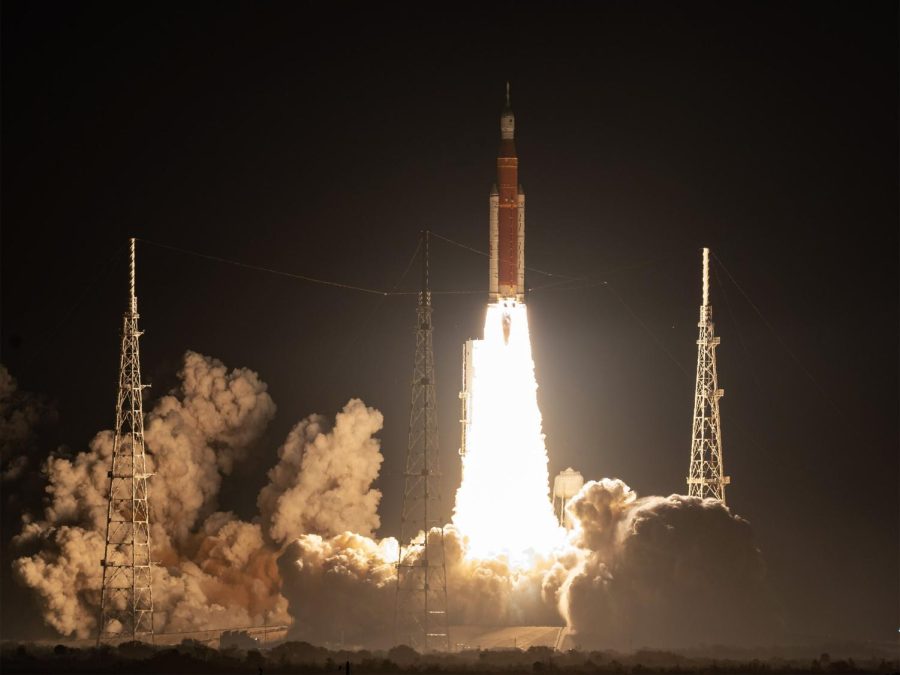Artemis 1 launches, paving way to historic return to the moon
On Nov. 16 at 12:47 a.m., NASA began its return back to the moon with the launch of Artemis 1 from Cape Canaveral, Florida. The unmanned spacecraft, Orion, will guide the way for humans to touch down onto the lunar surface for the first time in half a century since Apollo 17’s mission in 1972.
The majority of the rocket is actually made of engines, with Orion being the small, gum-dropped capsule at the very top. These engines, part of the new Space Launch System (SLS) and burning millions of pounds of fuel, broke away throughout the launch and flight of the spacecraft, having served their purpose after providing enough thrust to break free from Earth’s gravity and orienting Orion on its correct trajectory. This will guide Orion to a lunar flyby Nov. 21 only 60 miles away from the lunar surface, followed by a retrograde orbit around the moon Nov. 25. Then, the spacecraft will make its return journey, splashing down in the Pacific Ocean Dec. 11.
The SLS is the most powerful rocket in the world, and 15% more powerful than the original rockets that took humans to the moon during the Apollo missions.
Though Orion is equipped to carry humans, inanimate stand-ins were put in place that would track vital data. During the mission, engineers will closely monitor the spacecraft to determine whether it is safe enough to carry humans in Artemis II, the first crewed mission, to lunar orbit in 2024. Over the entire course of the Artemis missions, NASA plans to build a new space station orbiting the moon, as well as a habitable moon base.
The Artemis 1 mission has been plagued with difficulties leading up to its highly-anticipated launch. Four canceled launch dates starting in September have preceded the final successful blast-off, ranging from engine issues to hurricane weather. However, Nov. 16 proved Artemis 1’s capabilities and raised excitement for the future of space travel.
Ultimately, the Artemis missions will pave the way for crewed missions to Mars. NASA hopes to lay the foundations for reaching Mars, which is more than 200 times farther from the Earth than the moon, through these new lunar missions. The organization is hoping international space agencies and private companies will create a new lunar settlement and economy, which will aid humans’ first ever footsteps on the red planet.











